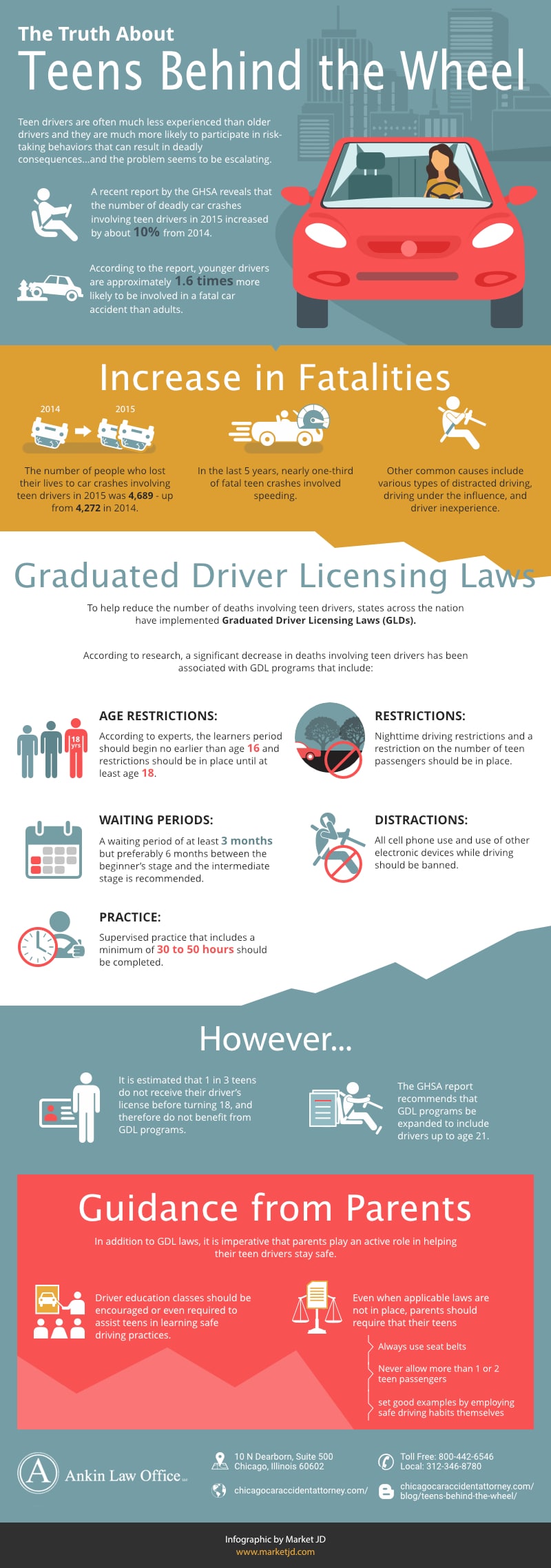Teen drivers are often much less experienced than older drivers and they are much more likely to participate in risk-taking behaviors that can result in deadly consequences- and the problem seems to be escalating. A recent report by the Governors Highway Safety Administration (GHSA) reveals that the number of deadly car crashes involving teen drivers in 2015 increased by about 10 percent from 2014. According to the report, younger drivers are approximately 1.6 times more likely to be involved in a fatal car accident than adults.
(Article continues below Infographic)

______
Preventing Fatal Car Crashes Involving Teen Drivers
The number of people who lost their lives to car crashes involving teen drivers in 2015 was 4,689- up from 4,272 in 2014. In the last five years, nearly one-third of fatal teen crashes involved speeding. Other common causes include various types of distracted driving, driving under the influence, and driver inexperience. To help reduce the number of deaths involving teen drivers, states across the nation have implemented Graduated Driver Licensing Laws (GLDs). According to research, a significant decrease in deaths involving teen drivers has been associated with GDL programs that include:
- Age Restrictions: According to experts, the learners period should begin no earlier than age 16 and restrictions should be in place until at least age 18.
- Waiting Periods: A waiting period of at least three months but preferably six months between the beginner’s stage and the intermediate stage is recommended.
- Practice: Supervised practice that includes a minimum of 30 to 50 hours should be completed.
- Restrictions: Nighttime driving restrictions and a restriction on the number of teen passengers should be in place.
- Distractions: All cell phone use and use of other electronic devices while driving should be banned.
Unfortunately, it is estimated that one in three teens do not receive their driver’s license before turning 18, and therefore they do not benefit from GDL programs. The GHSA report recommends that GDL programs be expanded to include drivers up to age 21.
In addition to GDL laws, it is imperative that parents play an active role in helping their teen drivers stay safe. Driver education classes should be encouraged or even required to assist teens in learning safe driving practices. Even when applicable laws are not in place, parents should require that their teens always use seat belts, never allow more than one or two teen passengers, and set good examples by employing safe driving habits themselves.



